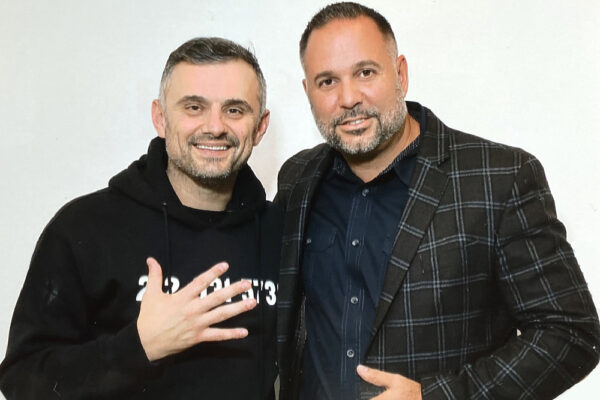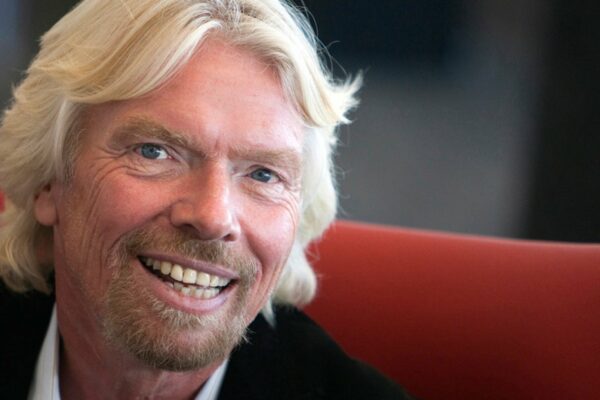I contacted Darren several years ago while I was a Project Manager for InterAKT Online, which finally got sold to Adobe. Time has passed, and now I can ask Darren some entrepreneur to entrepreneur questions, something that I could never imagine while I had a simple 9 to 5 job. He is the Fresh space owner, a small web design studio based in Sedbergh, Cumbria, and recently got involved in Ahoy there, a Web 2.0 project that should provide an easy-to-use system for people who need a job doing and are looking for a reputable service provider .
Tell us a little about yourself and how you ended up doing what you’re doing now?
Darren: I’ve been running a small web design studio in North West England since 2002, originally from my parent’s house, moving on to a spare room in my own house, and finally getting my own office in 2005.
My background originates in printmaking; my degree was Graphic Arts, Design and Printmaking though, by the time I graduated in 1998, I had moved into to working with video; specifically with Adobe Premiere and After Effects; one of my exhibition pieces ended up being used as a visual in a club in Amsterdam which I was pretty proud of at the time! From there, I started doing some bits of work for a multimedia company, working on a cd-rom that was used at agricultural shows to highlight farm safety (the complete opposite end of the spectrum to my previous video work!) Eventually, I was employed by a Telecoms training company to produce interactive Flash-based animations to replace some outdated PowerPoint movies. My introduction to websites came about when my employees got me to work on their corporate website; it was a baptism of fire, but it turned out ok, and I guess it’s from there I got hooked on web design.
You live and work in a rural UK area. What are the difficulties in working in working in a limited area? I assume there are a limited number of customers there.
Darren: Actually, there is a thriving working environment here; in some respects, the onset of Broadband (ADSL) over the last few years has improved the number of businesses looking for websites; be it traditional businesses such as Hotels and Inns who can see the benefits of having a brochure style website, to shops branching out selling their products online, to on-line only companies who work from home, and who prefer (like me) a more relaxed lifestyle that is based in a rural environment can bring, that’s not to say that we don’t work hard.
I suppose the difficulties working in a rural area are more to do with educating customers on what a good website really is and what it can do for their business; I don’t mean selling the latest technology but getting across how a website is only one part of a business; marketing be it SEO / PPC, email newsletters or paper-based advertising are as just as important as the website themselves. Sometimes there’s a naivety that a website will sell itself without any hard graft. It’s my job as a designer to get that point across and to send them in the right direction.
Ok, so can you give us some examples of websites that show this diversity of customers?
Darren: Firstly, I would go for www.churchmousecheeses.com; the business owners, John & Jules, moved to Kirkby Lonsdale, where I live, because they wanted a lifestyle change. John, who has an amazing passion for cheese, opened Churchmouse Cheeses in 2002; the shop stocks a diverse range of cheeses, many of which are locally sourced and other produce. What he’s done with his shop is to sell his passion for good fresh produce, and the website lends itself to that; it’s both a showcase for the shop and produces. But better still people can order on-line! I suppose the website originally was a great way to promote the shop; now, with a growing popularity, he’s get’s orders from all over the UK .
Silverdale Golf Club; www.silverdalegolfclub.co.uk is another good example; this, I think, was the second site I did. Originally it was a static site of about 5 pages, little changed, and happy with that. The people who deal with marketing the club and organize PR are for the most part retired, so 60 and onwards, previously they were happy for me to make any changes to the site, but I felt that they weren’t making the most of the site because it was a case of out of sight – out of mind. Over the past year, we started talking about how they could have more interaction with the site; of course, a new design was essential, but they needed a system that they could easily use to add content. For me, I was amazed at how enthusiastic they were to take this on and learn; eventually, we built the site using WordPress, mainly for its admin system, which the ladies and gents at the golf club, with a bit of help from me, have come to grips with really well.
I know you are working on a social networking project. What is it, and what is its purpose?
Darren: The project is www.ahoythere.com. It’s a UK-based website; its purpose is to provide an easy-to-use system for people who need a job doing and are looking for a reputable service provider (i.e., A joiner, accountant, or web designer). Instead of choosing a name at random from a directory, newspaper advert, or internet search, they post a ‘service request’ on the website and hear back from service providers who are genuinely interested in doing the work.
From the Service Providers perspective, anyone with a trade, profession, or skill can find business; instead of the chase after business, business comes to them. All people need to do is select the type of work and geographic areas they’re interested in, and they’re alerted (via email) when buyers post jobs that match their chosen criteria. That’s it in a nutshell.
Why should people use this service?
Darren: Well, it’s totally free; they can create an account and be up and running in about a minute. Could you make a cup of tea that fast? They’re not giving over any personal or contact details. Yet, they can browse at ease and with confidence profiles of businesses interested in doing work for them. Where’s the catch? There isn’t one! It’s about making life easier.
For Service Providers, I think the description above best describes why they should use it.
What’s the business model behind ahoy there? How will it bring money?
Darren: Ok, so as you know, Users don’t pay; it’s entirely free. Service Providers can respond to as many opportunities as they like for free. There are no subscriptions, no pay-per-lead, just a small referral fee if they actually get the business. That’s where the revenue will be generated. There are many other exciting ideas in the pipeline, but I can’t really talk about them yet!
What’s the biggest mistake you’ve made in your entrepreneurship life?
Darren: It would have to be underestimating the scales of developing a project like ahoythere.com. Obviously, when I first looked at the brief, I could see the enormity of it but thought that it could be done with a small team. In hindsight, it should have been done with a project manager, a designer, a developer, and a marketing specialist. The project manager to bring it all together, I’ve managed lots of projects big and small, but this, in comparison, was massive. I think I would have been better at keeping to the design side. We had many problems with the original developer; it turns out they were only working on the site part-time; obviously, that caused a lot of complications. A marketing specialist; ok, this aspect of the site wasn’t really a mistake, but it’s an area we should have researched as much as we did the site itself.
I understand how to develop a site for SEO /optimization and how that works; however, when it comes to marketing a site like Ahoy There and getting it in front of people is another matter, it’s been a steep learning curve for myself and Christian, the owner of the business. We’ve learned a lot on the way and jumped many hurdles, but I think it’s fair to say both of us would have preferred to avoid them!
You outsource some of your work. How did you decide what to outsource and where to outsource it?
Darren: That’s right, I’m a small business, and when needed, I try to work with other like-minded businesses to get jobs done effectively. Originally, when I started working on E-commerce sites, I used a product called MX Kart by a company called InterAKT; at the time, I wasn’t aware where the company was based; all I knew was they provided an excellent product with great customer service. Over time I started to need custom elements adding to some of my e-commerce sites, so logically the first people I contacted were InterAKT; that’s when I found they were based in Romania. If I was honest, I was shocked, in the sense that I wasn’t aware that such a forward-thinking product could be developed in a country that has, say, fewer opportunities than my own. I don’t mean that condescendingly, but I presumed they would be a US or UK-based company. I developed a good relationship with them until, as many people will know, they were bought out by Adobe. Obviously, I had mixed emotions over this; on the one hand, I was happy for them, what an achievement! But on the other hand, I realized I was going to lose one of my support networks. Luckily some of the developers there put me in contact with a former employee of theirs who could help me find the services I need. I decided to stay working with you because of your familiarity with the InterAKT products, and I think my judgment has been rewarded!
Financing. When starting up, what sources of financing did you use?
Darren: Foolishly, not much. The training company I worked for went into liquidation, so I had to make a quick decision; go it alone or find another job. I had been doing some freelance work, and I liked the freedom of being my own boss. I went it alone, and it was, I have to admit, hard. I soon realized that my design skills alone weren’t going to get me to work, I had no other business or marketing skills, but eventually, with lots of help from my girlfriend Debbi, I cracked it. It was probably after 18 months I got my first major break; I’d sent out lots of mail-shots to businesses, none of which came to anything. However, one of the businesses kept my details and got me in to discuss their website; it turned out to be my first eCommerce site. The customer was The Bath House, and they’re now one of my oldest clients; I still do a lot of work for them, and as it happens, I rent an office from them too.
What are the most important 3 things people should take into consideration before starting a business?
Darren:
1. Think long and hard about why you’re doing it. Remember, it isn’t always going to be easy, and 9 to 5!
2. Talk about it with family and friends; get advice from the people you trust most. They’re not usually wrong!
3. Money; it doesn’t grow on trees! Make sure you can afford to get by for at least the first year. If you don’t have to worry about paying bills, then you can get on with the serious issues of running a business.




